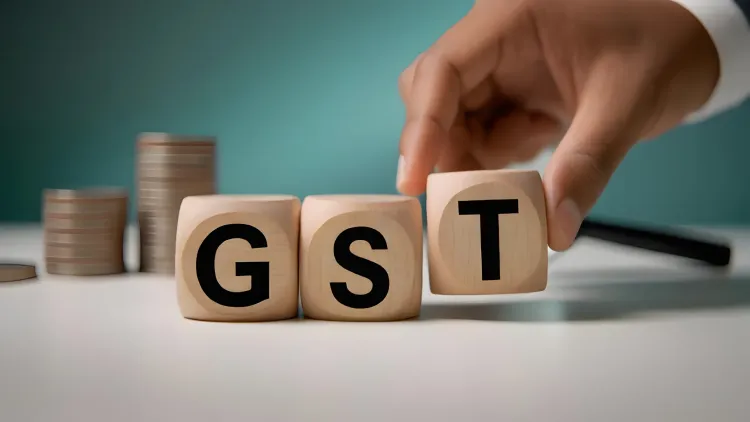How Will GST Reforms Enhance Consumers' Disposable Income?

Synopsis
Key Takeaways
- Proposed GST overhaul aims to simplify tax structure.
- Expected increase in disposable income for consumers.
- Small businesses to benefit from lower compliance burdens.
- New GST rates likely to be introduced by Diwali.
- Overall economic growth stimulation anticipated.
New Delhi, Aug 16 (NationPress) The government's initiative to revamp the Goods and Services Tax (GST) framework aims to enhance the disposable income of Indian consumers, which could lead to a surge in demand and consumption across the economy. This statement was made by Najib Shah, the former Chairman of the Central Board of Excise and Customs (CBEC), on Saturday.
The central government is considering simplifying the existing four-slab GST structure into two major rates of 5 percent and 18 percent, with an additional special rate of 40 percent targeting luxury and sin goods.
This proposal emerged after Prime Minister Narendra Modi indicated in his Independence Day speech from the Red Fort that significant GST reforms would be introduced by Diwali, promising substantial tax relief for the common man and advantages for small businesses.
During his discussion with IANS, Najib Shah proposed that the existing slabs could be consolidated into new rates, suggesting the 5 percent and 12 percent slabs merge into a middle bracket of approximately 7-8 percent.
He also recommended combining the 12 percent and 18 percent rates into a 15-16 percent slab, with the 28 percent rate possibly rising to 30 percent after the cess is eliminated in March 2026.
Shah emphasized that the reduction in the number of tax slabs and lower rates should result in increased disposable income for consumers, thereby boosting overall demand and consumption.
The expert pointed out that the GST reforms should lead to lower prices, improved credit flow, resolution of tax inversion issues, and fewer disputes, ultimately lowering costs for both producers and consumers.
He noted that government revenue collections would not suffer while also providing relief to consumers.
Moreover, small and medium enterprises (SMEs) are likely to benefit significantly from streamlined tax rates, reduced compliance burdens, and enhanced access to credit within the GST system.
Describing the GST reforms as long overdue, Shah shared with IANS his view that these changes represent a transformative measure that will fortify the tax system, stimulate economic growth, and reinforce India's status as a prime investment hub.
According to the government's proposal, approximately 99 percent of items currently taxed at 12 percent are expected to transition to the 5 percent category, while 90 percent of items within the 28 percent slab, including white goods, are anticipated to move to 18 percent.
Shah remarked that finalizing these new rates will require essential meetings of the GST Council, along with ensuring the GST Network is adequately prepared for smooth nationwide implementation.
He expressed optimism regarding the positive outlook from S&P and the RBI on India's stable GDP growth projection of 6.5 percent, which stands as the highest among major economies.
Shah added that while US tariffs may impact certain labor-intensive exports, their overall effect on GDP will be minimal, as exports to the US account for only about 2 percent of India's economy. He encouraged India to explore alternative export markets and enhance competitiveness to mitigate any consequences from US tariffs, bolstered by targeted policy initiatives. He also highlighted that India's various FTAs and CEPAs—with the UK already finalized and the EU nearing completion—will not only lower trade barriers but also attract significant foreign investment.









